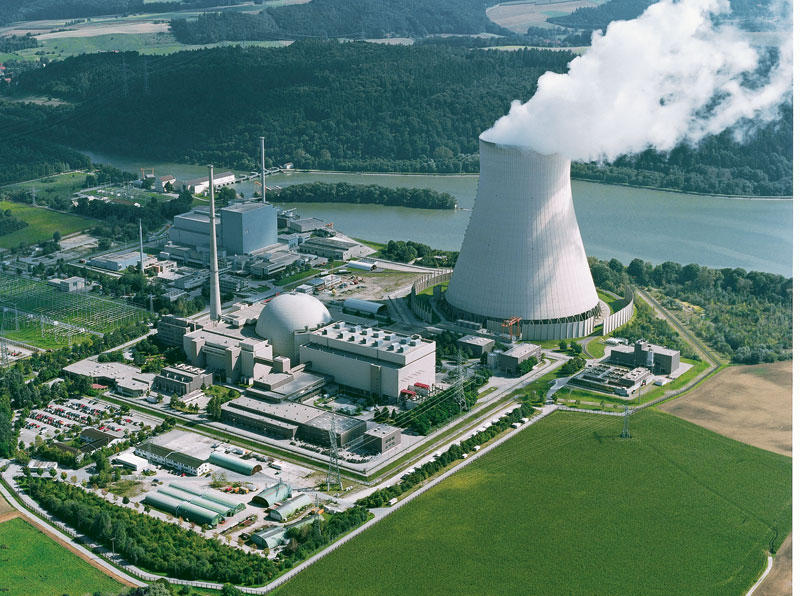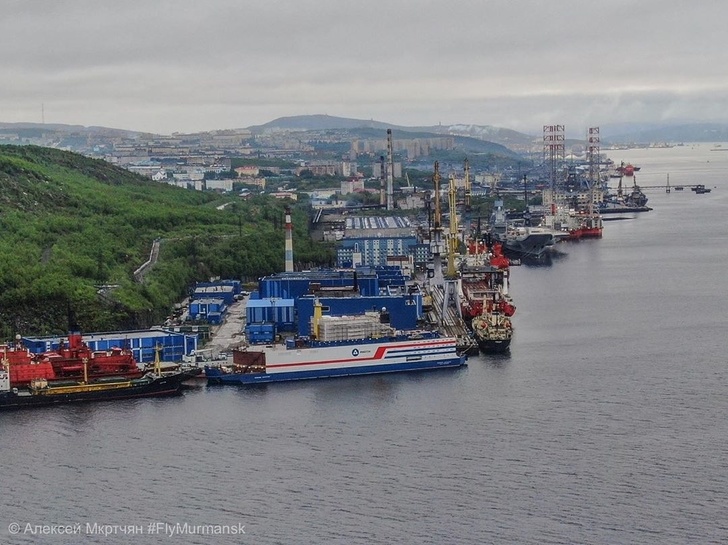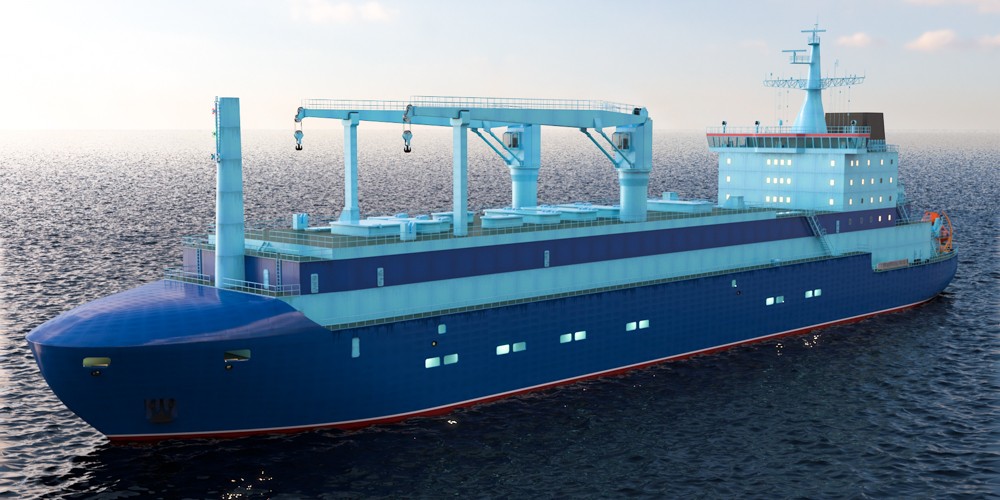And ranching of deer and other meats.
There is a ton of potential.
Most mines closed though due to lack of profit. Wonder if that can change.
 Re: Russian Nuclear Deals: News
Re: Russian Nuclear Deals: News Re: Russian Nuclear Deals: News
Re: Russian Nuclear Deals: Newsmiketheterrible wrote:I was thinking about it, and realized that area would be wonderful to set up a series of greenhouses to grow all kinds of food. And since port is right there, they can easily transport it. So much land not used can be utilized for indoor farming. As well, since it's permafrost, various kinds of berries and even potatoes grow.
And ranching of deer and other meats.
There is a ton of potential.
Most mines closed though due to lack of profit. Wonder if that can change.
Economy
Chukotka has large reserves of oil, natural gas, coal, gold, and tungsten, which are slowly being exploited, but much of the rural population survives on subsistence reindeer herding, whale hunting, and fishing. The urban population is employed in mining, administration, construction, cultural work, education, medicine, and other occupations.
 Re: Russian Nuclear Deals: News
Re: Russian Nuclear Deals: News Re: Russian Nuclear Deals: News
Re: Russian Nuclear Deals: NewsHole wrote:Don´t know about of it would work, because of the freezing temperatures, but they could build hundreds of wind farms at the coast.


 Re: Russian Nuclear Deals: News
Re: Russian Nuclear Deals: News Re: Russian Nuclear Deals: News
Re: Russian Nuclear Deals: News Re: Russian Nuclear Deals: News
Re: Russian Nuclear Deals: News Re: Russian Nuclear Deals: News
Re: Russian Nuclear Deals: News Re: Russian Nuclear Deals: News
Re: Russian Nuclear Deals: News
 Re: Russian Nuclear Deals: News
Re: Russian Nuclear Deals: News Re: Russian Nuclear Deals: News
Re: Russian Nuclear Deals: News Re: Russian Nuclear Deals: News
Re: Russian Nuclear Deals: News Re: Russian Nuclear Deals: News
Re: Russian Nuclear Deals: News
 Re: Russian Nuclear Deals: News
Re: Russian Nuclear Deals: News
A new fission-fusion hybrid reactor will be assembled at Russia’s Kurchatov Institute by the end of 2018, Peter Khvostenko, scientific adviser of the Kurchatov complex on thermonuclear energy and plasma technologies, announced on 14 May. The physical start-up of the facility is scheduled for 2020.
The hybrid reactor combines the principles of thermonuclear and nuclear power – essentially a tokamak fusion reactor and a molten salt fission reactor. Neutrons produced in a small tokamak will be used be captured in a molten salt blanket located around tokamak. The facility will use thorium as a fuel, which is cheaper and more abundant than uranium. Moreover, unlike a fusion reactor, a hybrid will not require super high temperatures to generate energy.
Hybrid reactors reduce the impact of the nuclear fuel cycle on the environment. The concept combines conventional fission processes and fusion reactor principles, comprising a fusion reactor core in combination with a subcritical fission reactor. The results of the fusion reaction, which would normally be absorbed by the cooling system of the reactor, would feed into the fission section, and sustain the fission process. Thorium in a molten salt blanket will enable breeding or uranium-233.
Some of the expected advantages include:
Utilisation of actinides and transmutation from long-lived radioactive waste;
An increase in energy recovered from uranium by a large factor;
The inherent safety of the system, which can be shut down rapidly; and
High burnup of fissile materials leaving few by-products.
The hybrid fission-fusion reactor is seen as a near-term commercial application of fusion pending further research on pure fusion power systems.
The first Russian design of a hybrid reactor was developed in 1977 by Yevgeny Velikhov and Igor Golovin. The past few years have seen the design and upgrade of the original T-15 tokamak and other test beds and facilities at the Kurchatov Institute as physical prototypes for the Fusion Neutron Source (FNS) as well as development of the DEMO-FNS and design of a Pilot Hybrid Plant (PHP) for transmutation, tritium and fissile isotope breeding.
The institute began working on the DEMO-FNS in 2013. It will comprise a reactor in which neutrons produced during a thermonuclear reaction will be used to generate fissile materials from uranium-238, which can be used as fuel in a nuclear reactor. Demonstration of the DEMO-FNS project is planned for 2023, and the PHP will be built by 2050.
"The hybrid tokamak is now called the T-15MD, which is a large installation,” said Khvostenko. “At the end of the year we have to assemble it on the site of the old T-15 which we dismantled in order to build a new one on its foundation.” He added that in 2020 there would be a physical launch of a new facility, and scientists will work on the technologies that "are necessary for a thermonuclear neutron source precisely for a hybrid reactor”.
The experience gained should also feed into the International Experimental Thermonuclear Reactor (Iter) under construction in France. Russian scientific organisations are responsible for the manufacture of 25 systems for Iter. The Institute of Nuclear Physics (INP) of the Siberian Branch of the Russian Academy of Sciences will become the centre for integration of foreign participants in Iter. Components made in different countries will be assembled and tested at the INP site. The first plasma of Iter is planned for 2025.

 Re: Russian Nuclear Deals: News
Re: Russian Nuclear Deals: News Re: Russian Nuclear Deals: News
Re: Russian Nuclear Deals: News

 Re: Russian Nuclear Deals: News
Re: Russian Nuclear Deals: News
 Re: Russian Nuclear Deals: News
Re: Russian Nuclear Deals: NewsRosatom’s subsidiary to make sixteen reactors for NPP in seven countries
The reactors will be built for Bangladesh, Turkey, Finland, Hungary, China, Iran, and Egypt
ROSTOV-ON-DON, July 11. /TASS/. AEM-Technologies, an affiliate of the Russian state nuclear corporation Rosatom, will make sixteen reactors for nuclear power plants (NPP) in seven countries, the company said in response to the request from TASS.
"We will have to make sixteen reactor units and the similar number of steam generator packages (60 heat exchangers) over five years to come, including for overseas projects of Rosatom - power plants in Bangladesh, Turkey, Finland, Hungary, China, Iran, and Egypt," the company said.
Reactors of modern design VVER-1000 and VVER-1200 are meant, the company noted.
AEM-Technologies started equipment manufacturing in March for Ruppur, the first NPP in Bangladesh. The reactor and the set of steam generators are planned for shipment to the first unit of NPP in 2020, followed by the steam generator for the second unit in the same year, and the reactor in 2021, the company said.
 Re: Russian Nuclear Deals: News
Re: Russian Nuclear Deals: News Re: Russian Nuclear Deals: News
Re: Russian Nuclear Deals: News

 Re: Russian Nuclear Deals: News
Re: Russian Nuclear Deals: News
 Re: Russian Nuclear Deals: News
Re: Russian Nuclear Deals: News Re: Russian Nuclear Deals: News
Re: Russian Nuclear Deals: NewsAustin wrote:Rapid Advancements for Fast Nuclear Reactors
https://www.powermag.com/rapid-advancements-for-fast-reactors/
 Re: Russian Nuclear Deals: News
Re: Russian Nuclear Deals: NewsUS intends to oust Russia and China from nuclear technology market
The United States intends to completely push Russia and China out of the nuclear technology market and become a world leader in this area. This is stated in the strategy adopted by the US Department of Energy. According to the new strategy, the United States intends to enter markets dominated by Russian and Chinese companies, supplant them and take the place of the new leader in exporting "the world's best nuclear energy technologies." In particular, it is proposed to prevent the establishment of strong ties between Russia and China with a number of "Eastern European and African" countries. In addition, it is planned to give the US Nuclear Regulatory Commission new powers, which include the right to "refuse to import Russian and Chinese nuclear fuel." The reason for this failure will be "
The ability of foreign nations to provide a nuclear fuel reprocessing cycle to establish dominant market positions and strong bilateral relations can pose serious geopolitical challenges for the United States.
- the document says.
The first steps in implementing the new strategy are to significantly reduce the volume of Russian nuclear fuel allowed for import into the United States. We are talking about the restrictions that should be imposed against the Russian company Rosatom TVEL.
The paper is currently under consideration by Donald Trump.
https://topwar.ru/170578-ssha-namereny-vytesnit-rossiju-i-kitaj-s-rynka-jadernyh-tehnologij.html

 Re: Russian Nuclear Deals: News
Re: Russian Nuclear Deals: News